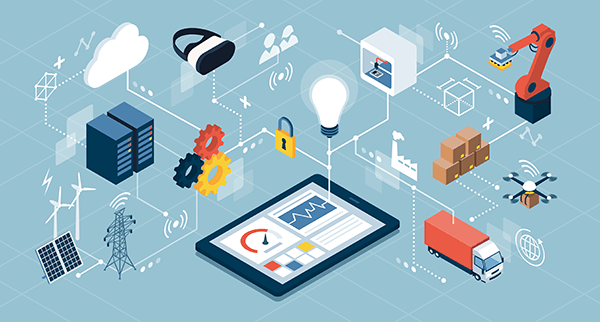Imagine a smart display that shows real-time data and accepts touch input, AND also talks directly to the cloud and allows users to control it from anywhere. That’s exactly what STM32 display solutions offer.
In modern IoT applications, a traditional display is no longer enough. Today’s users expect fast local interaction, seamless remote access, and smart control – all in one device. STM32-based displays, like those from Inelco Hunter, combine responsive GUIs, built-in networking, and secure cloud connectivity, making them the ideal front end for smart, connected systems.
Whether you’re designing industrial controllers, energy monitors, smart appliances, or embedded dashboards, an STM32 display can help you deliver a professional, modern, cloud-ready experience … without the overhead of a PC or PLC-based HMI.

Why use STM32 Displays in IoT Applications?
STM32 microcontrollers are known for their rich peripheral set, high performance and energy efficiency. When paired with an embedded display, such as those developed using TouchGFX or Embedded Wizard, the result is a powerful smart HMI (Human-Machine Interface), which not only interacts with the user but also serves as a control hub for cloud-connected systems.
Here’s how STM32 displays unlock real-world IoT value:
- Visualises Cloud Data in Real-Time
With cloud integration (via MQTT, HTTPS, or REST APIs), STM32 displays can:
- Show live telemetry from remote sensors
- Display diagnostic data, error logs, and predictive maintenance alerts
- Graph trends like temperature, pressure, energy usage, or machine status
By placing this information directly in front of users – on machines, wall panels, or handheld devices – the display becomes the first point of insight into your IoT system.
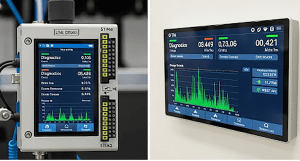
- Local Control with Cloud Sync
An STM32 display can allow users to change settings locally e.g., adjusting a smart thermostat or controlling industrial parameters, and then sync those changes to the cloud. This reduces dependency on external devices like phones or laptops, and also enables:
- Offline fallback operations
- Immediate feedback through touchscreen or physical inputs
- Continuous synchronisation to AWS, Azure, or private cloud systems
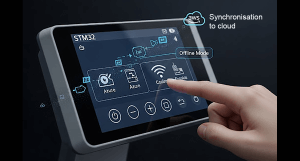
- Remote Access via Web Browser
Thanks to STM32’s networking capabilities, users can access the device from any browser – on a PC, tablet, or smartphone – without installing any special apps. The STM32 system can serve a lightweight, embedded web interface using:
- LwIP + HTTP(S) server
- CGI for remote control/configuration
- SSI or AJAX for live updates
This allows:
- Remote configuration and monitoring from anywhere on the LAN or cloud
- Multi-user access for maintenance teams, supervisors, or customers
- Mobile-friendly control panels for field use or service technicians
Whether it’s adjusting system parameters, viewing sensor logs, or triggering remote actions, browser access transforms the STM32 display into a fully connected, cross-platform control panel.
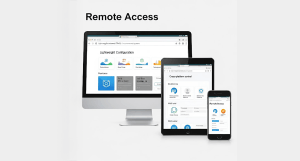
-
- Inelco Hunter STM32 Displays: GUI and Web in Parallel
One of the standout capabilities of Inelco Hunter STM32 display modules is the ability to run an interactive GUI on the screen and a web server simultaneously. This parallel operation provides:
- A smooth local touch interface for on-device interaction
- Modern smartphone/tablet-like GUI by TouchGFX and Embedded Wizard
- A responsive web dashboard accessible from a browser
- Synchronised state and control, so both local and remote users see the same data and settings
This dual-mode operation makes these displays ideal for smart IoT devices where both hands-on control and remote access are essential, without needing multiple processors or external gateways.
- Unified User Experience across Local and Remote Interfaces
One of the key benefits of using STM32 displays, especially with integrated web access, is the ability to deliver a consistent user experience, whether users are interacting directly with the screen or remotely via a browser.
With a single STM32 system:
- The on-screen GUI and web interface can share the same logic and data, ensuring consistency
- Users in the field can use the touchscreen, while remote users (managers, service teams, or integrators) access the same interface via a browser
- Branding, workflows and controls can be designed once and deployed across both local and cloud-connected interfaces
This unified experience not only improves usability but also reduces development effort and eliminates version mismatch between local firmware and remote dashboards.
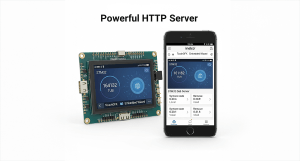
- STM32 Displays vs Traditional HMIs: A Smarter Approach
Compared to conventional HMIs, which are often bulky, expensive, and limited to local control, STM32 display solutions offer significant advantages:
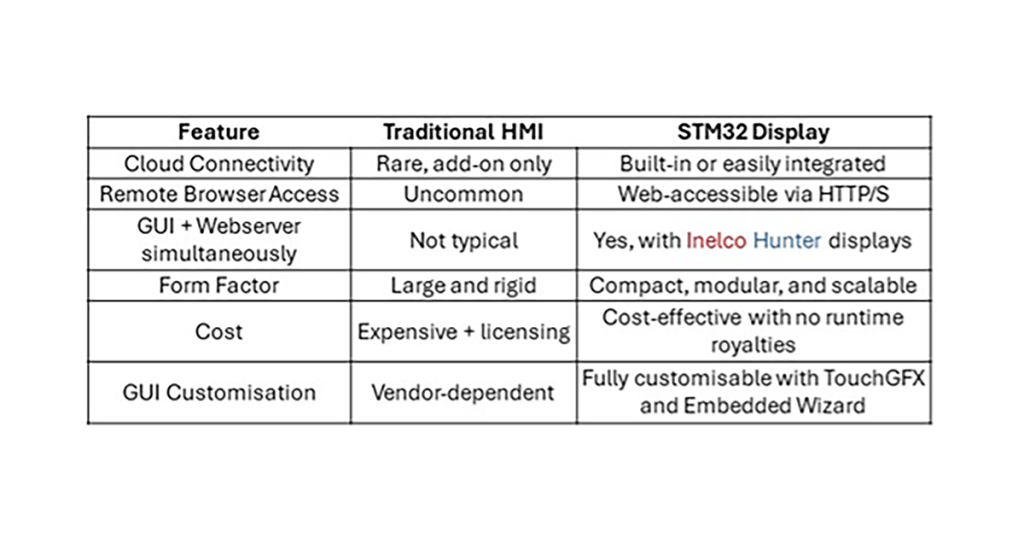
By combining display, control, connectivity, and logic on a single STM32 display, you reduce complexity, cost, and time-to-market … all while delivering a more modern and interactive experience to your end users.
Final Thoughts
In a well-designed IoT system, the STM32 display is more than just a screen – it’s a smart node that combines local interactivity with global connectivity. Whether you’re building a smart appliance, an industrial monitor, or an environmental dashboard, STM32 displays help you bridge the gap between cloud intelligence and human experience.
Compared to traditional HMIs, STM32 displays provide a more compact, intelligent, and cost-effective solution – with the added benefit of remote browser access and parallel local control. With Inelco Hunter STM32 display modules, your IoT system gains the flexibility, visibility, and interactivity that modern users expect.
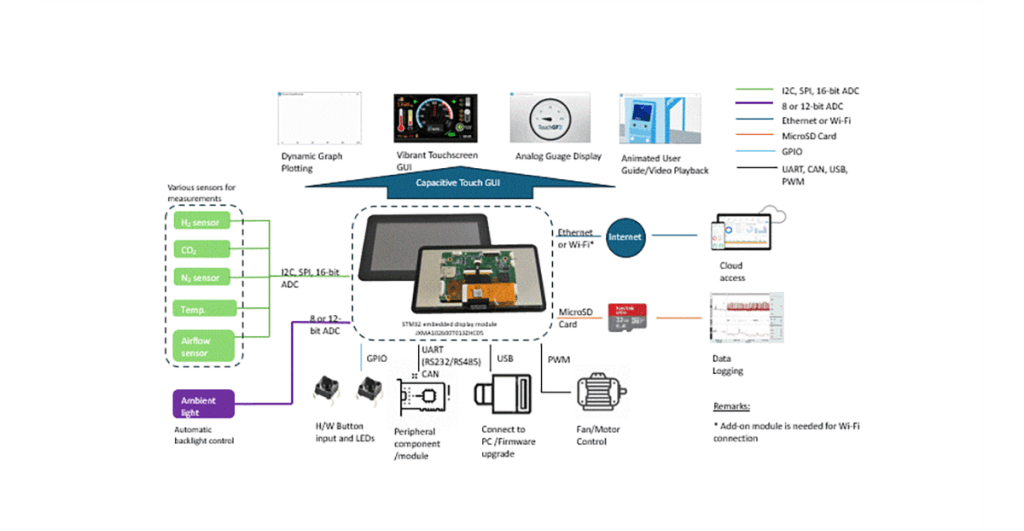
Whether you are launching a new product or upgrading an existing design, Inelco Hunter’s STM32 displays provide the flexibility, performance, and time-to-market advantages that today’s embedded projects demand.
Ready to accelerate your next project?
Contact us today to learn more about how Inelco Hunter’s STM32 display solutions can help you deliver outstanding embedded experiences – faster and smarter.

